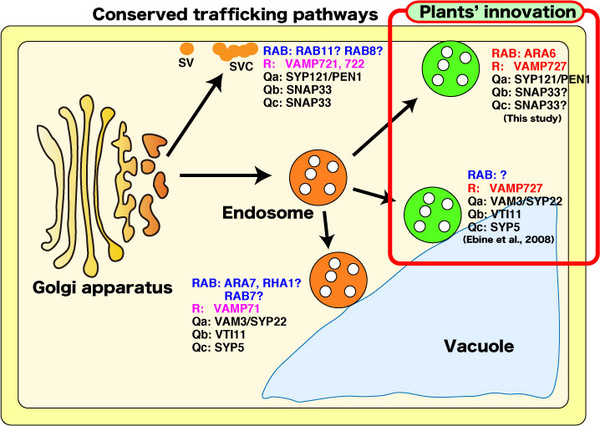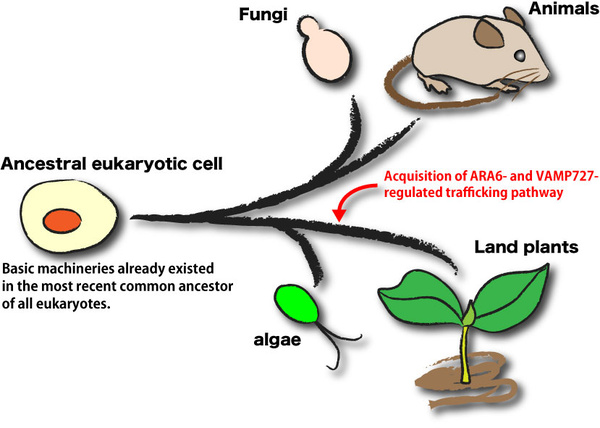How did plants explore unique intracellular trafficking routes?
Endosomal trafficking plays an integral role in various eukaryotic cell activities. In animal cells, a member of the RAB GTPase family, RAB5, is known as a key regulator of various endosomal functions, including endosomal fusion, endosomal signaling, and endosomal motility. In addition to orthologs of animal RAB5, land plants harbor the plant-unique RAB5, conserved in all land plant lineages examined thus far. Previously, it was unknown and of much interest why plants evolved two distinct types of RAB5 and how they differed functionally. Plants also acquired the unique machinery for membrane fusion (SNARE protein) during evolution. The presence of plant-specific RAB and SNARE suggested diversification of membrane trafficking pathways was achieved by molecular evolution of RAB and SNARE in a lineage specific manner; however, this has not been demonstrated experimentally. Using Arabidopsis thaliana, we showed the plant-unique RAB5 (ARA6) promotes membrane fusion between endosomes and the plasma membrane, with seed plant-unique R-SNARE (VAMP727) (Figure 1). This pathway has not been described in plant cells thus far. We further demonstrated that ARA6 has a functional role in the salinity stress response. Our results indicate that plants explored a new intracellular trafficking route from endosomes to the plasma membrane during evolution (Figure 2), which plays an important role in responding to environmental cues.
Program member
Akihiko Nakano (Department of Biological Sciences, Graduate School of Science)

Figure 1. Diversification of membrane trafficking pathways in plant cells, which was achieved by acquisition of new RAB and SNARE molecules.

Figure 2. A novel trafficking pathway modulated by ARA6 and VAMP727 was acquired during plant evolution.
